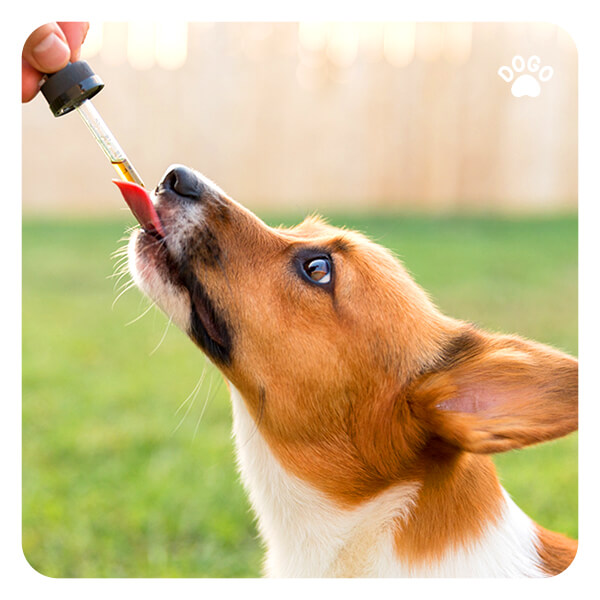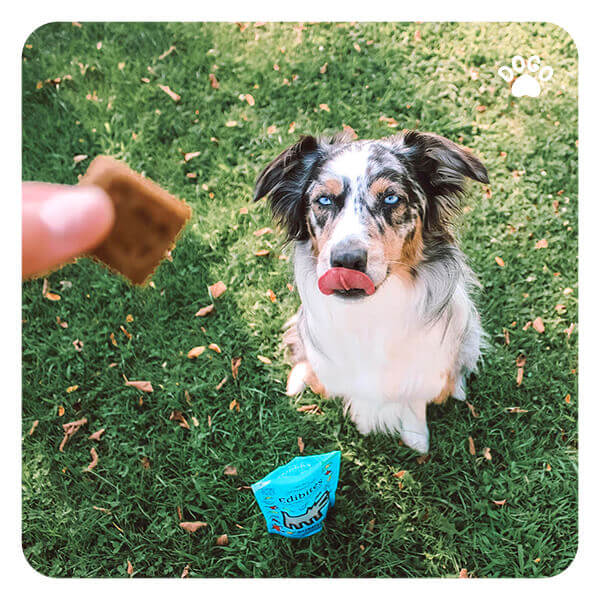CBD 101 For Dogs: How CBD Can Benefit Your Dog’s Health
Post Date:
November 12, 2023
(Date Last Modified: November 13, 2025)
Many dog owners are hearing about cannabidiol and considering it for routine wellness or specific health concerns. This overview explains what CBD is, how it may interact with dogs, and practical points for safe use.
What CBD Is and How It Works
Cannabidiol (CBD) is one of more than 100 cannabinoids identified in cannabis plants.[1] Hemp and marijuana are both Cannabis species, but hemp is defined in U.S. federal law as cannabis with no more than 0.3% Δ9‑tetrahydrocannabinol (THC) on a dry weight basis.[2] Manufacturers extract CBD using methods such as CO2 supercritical extraction, ethanol extraction, and solvent-based methods; finished products are often labeled as full‑spectrum, broad‑spectrum, or isolate, with isolates typically processed to greater than 99% CBD purity.[3]
The Canine Endocannabinoid System (ECS)
Dogs possess the core ECS components: CB1 and CB2 receptors, endogenous ligands like anandamide, and metabolic enzymes that synthesize and break down endocannabinoids; receptor distribution varies by tissue and species. CBD does not bind strongly to CB1 in the same way THC does but appears to modulate ECS tone indirectly through enzyme inhibition, receptor modulation, and non‑cannabinoid receptor pathways.[3] Comparative work shows receptor density and signaling kinetics differ between humans and dogs, which is why extrapolation of human dosing and effects should be done cautiously and rely on species‑specific data whenever possible.[3]
Evidence-Based Benefits by Condition
Pain and osteoarthritis: randomized and controlled trials in dogs suggest measurable improvements in pain and mobility metrics, with reported effect sizes often in the range of 20–30% compared with baseline or placebo in small studies.[1] These trials typically note limitations such as small sample sizes, short follow‑up, and heterogeneity of formulations and doses.[1]
Anxiety and behavior: behavioral trials are fewer and show variable response rates; some controlled reports describe up to approximately 40% of treated dogs showing clinically meaningful reductions in situational anxiety measures, though replication is limited.[1]
Seizures and inflammation: case reports and small case series have noted seizure‑frequency reductions in subsets of dogs (ranges reported roughly 30–50% in uncontrolled series), but well‑powered veterinary randomized controlled trials are limited and results are mixed.[1] Appetite and dermatologic effects have anecdotal and preliminary support, but controlled data remain sparse, leaving important gaps for many indications.[1]
Types of CBD Products and Delivery Methods
Common formats include oils/tinctures, edible treats, capsules, and topical preparations; each has tradeoffs for dosing precision, palatability, and intended effect. Oils delivered under the tongue or mixed into food offer flexible dose adjustment, while chews simplify administration but limit precise titration.[5]
Oral bioavailability of CBD in dogs is relatively low compared with parenteral routes and is influenced by formulation and fed/fasted state; oral onset is typically 30–90 minutes with duration commonly lasting 6–12 hours depending on dose and product.[1]
Types of Packaging and Measuring
Look for dropper bottles that report mg CBD per mL and for chew treats that list mg CBD per treat; accurate measurement matters because therapeutic ranges used in trials are expressed in mg/kg and must be converted to mL/kg for liquid products.[5]
Dosing Principles and Administration Protocols
Clinical dosing ranges reported in canine studies vary, with many trials and case series using total daily CBD doses from about 0.5 to 2.0 mg/kg, typically divided into two doses per day.[1] A conservative “start low, go slow” approach is standard: begin at the low end of an evidence‑based range and titrate upward every 7–14 days while monitoring response and side effects.[5]
For liquids, use a simple conversion formula in mL/kg/day: mL/kg/day = (target mg/kg/day) ÷ (product mg/mL). For example, a target dose of 1.0 mg/kg/day using an oil at 50 mg/mL equals 0.02 mL/kg/day (1.0 ÷ 50 = 0.02).[1] If dosing twice daily, divide the mL/kg/day value by 2 to get the per‑dose volume.
| Dog weight (lbs) | Weight (kg) | Target dose (mg/kg/day) | mL per day (50 mg/mL) |
|---|---|---|---|
| 22 lbs | 10 kg | 1.0 mg/kg | 0.20 mL/day |
| 44 lbs | 20 kg | 1.0 mg/kg | 0.40 mL/day |
| 66 lbs | 30 kg | 1.0 mg/kg | 0.60 mL/day |
| 88 lbs | 40 kg | 1.0 mg/kg | 0.80 mL/day |
Safety, Side Effects, and Drug Interactions
The most commonly reported adverse effects in canine studies are mild sedation and transient gastrointestinal signs such as soft stool or vomiting; reported incidence varies but sedation appears in approximately 10–20% of treated dogs in some series.[3] Some controlled trials have documented asymptomatic elevations in liver enzymes (ALT) in a minority of dogs, with rates around 10% in certain cohorts, so baseline and follow‑up bloodwork are advisable for dogs on chronic CBD therapy.[3]
CBD is metabolized by hepatic cytochrome P450 enzymes and can affect the metabolism of other drugs, including anticonvulsants; known or suspected interactions warrant veterinary oversight and potential dose adjustments of concomitant medications.[3] Special populations such as pregnant or lactating dogs and young puppies lack adequate safety data and are generally advised to avoid CBD products unless a veterinarian determines the benefits outweigh the unknown risks.[3]
Quality Assurance and How to Read Labels
Prefer products with third‑party Certificates of Analysis (COAs) that report cannabinoid potency (mg/mL and mg/serving) and test results for pesticides, heavy metals, and residual solvents; reputable COAs will identify the lab and the batch tested.[2] Regulatory guidance generally considers THC levels above 0.3% dry weight as outside the legal hemp definition, so COAs should confirm THC is below that threshold.[2]
Avoid products with undeclared potency, COAs older than the product’s manufacture date, or COAs that do not test for common contaminants; consistent batch testing and source transparency (hemp origin and extraction method) support better quality control.[5]
Legal, Regulatory, and Veterinary Considerations
U.S. federal policy distinguishes hemp from marijuana based on the 0.3% Δ9‑THC threshold, but state laws and enforcement differ and can affect possession, sale, and veterinary advice.[2] Veterinarians’ ability to prescribe or dispense CBD varies by jurisdiction and professional guidance; in some places vets may discuss use and review COAs but cannot write prescriptions for non‑approved cannabis products.[4]
When visiting a veterinarian, bring the product COA, label showing mg/mL or mg/serving, and a dosing log that lists dates, times, and amounts given to help the clinician assess effects and interactions.[4]
Monitoring Outcomes and When to Adjust or Stop
Set measurable monitoring goals such as a validated pain score, timed mobility tests, appetite and stool charts, or behavioral logs and review these metrics after an adequate trial period of 2–4 weeks at a target dose before deciding on further titration.[1] If after a properly titrated period there is no meaningful benefit, consider a structured dose increase or discontinuation while reassessing for side effects and drug interactions.[5]
Seek immediate veterinary attention if a dog develops acute signs such as persistent vomiting, collapse, seizures that are new or worsened, or progressive lethargy; those are indications to stop the product and obtain prompt medical evaluation.[3]




